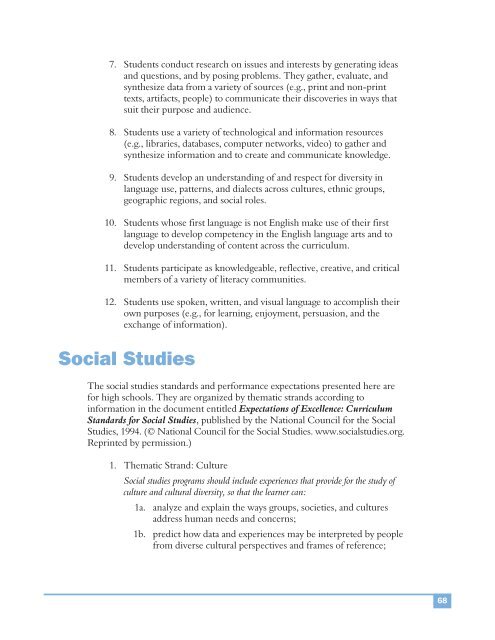National AFNR Career Cluster Standards
National AFNR Career Cluster Standards
National AFNR Career Cluster Standards
Create successful ePaper yourself
Turn your PDF publications into a flip-book with our unique Google optimized e-Paper software.
7. Students conduct research on issues and interests by generating ideasand questions, and by posing problems. They gather, evaluate, andsynthesize data from a variety of sources (e.g., print and non-printtexts, artifacts, people) to communicate their discoveries in ways thatsuit their purpose and audience.8. Students use a variety of technological and information resources(e.g., libraries, databases, computer networks, video) to gather andsynthesize information and to create and communicate knowledge.9. Students develop an understanding of and respect for diversity inlanguage use, patterns, and dialects across cultures, ethnic groups,geographic regions, and social roles.10. Students whose first language is not English make use of their firstlanguage to develop competency in the English language arts and todevelop understanding of content across the curriculum.11. Students participate as knowledgeable, reflective, creative, and criticalmembers of a variety of literacy communities.12. Students use spoken, written, and visual language to accomplish theirown purposes (e.g., for learning, enjoyment, persuasion, and theexchange of information).Social StudiesThe social studies standards and performance expectations presented here arefor high schools. They are organized by thematic strands according toinformation in the document entitled Expectations of Excellence: Curriculum<strong>Standards</strong> for Social Studies, published by the <strong>National</strong> Council for the SocialStudies, 1994. (© <strong>National</strong> Council for the Social Studies. www.socialstudies.org.Reprinted by permission.)1. Thematic Strand: CultureSocial studies programs should include experiences that provide for the study ofculture and cultural diversity, so that the learner can:1a. analyze and explain the ways groups, societies, and culturesaddress human needs and concerns;1b. predict how data and experiences may be interpreted by peoplefrom diverse cultural perspectives and frames of reference;68
















